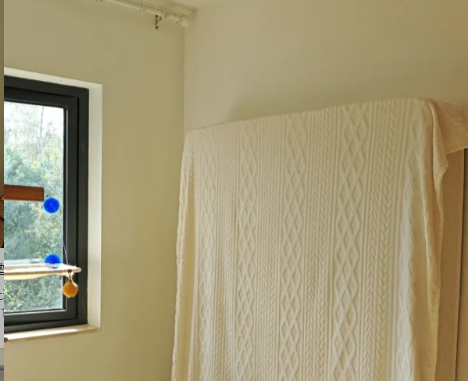Currency


How to Properly Store a Mattress and Extend Lifespan?
In our daily life, mattresses are often the most commonly used and frequently used household products. We usually pay more attention to the selection and cleaning of mattresses, but the storage of mattresses is also very important. Moving, changing seasons, or temporarily idle, we all need to store the mattress properly, otherwise it will get damp, moldy, and deformed, affecting its reuse.
This article will introduce how to properly store mattresses, what preparations need to be made before storage, and how to choose the appropriate method based on the length of storage time to extend the service life of the mattress.

Ⅰ. Introduction: Why Should We Not Take Storing Mattresses Lightly?
The mattress may seem like a "very sturdy" object, but it is actually very "delicate". Especially for high elasticity materials such as memory sponge mattresses and latex mattresses, they have relatively high requirements for humidity, compression, and air circulation. Once stored improperly, they may:
Internal mold: humid environment+impermeable material=mold spots+odor
Structural collapse or deformation: especially when curled or vertically placed, uneven stress on the supporting layer
Surface oxidation turning yellow: especially latex mattresses, accelerate aging in poorly ventilated environments
Breeding mites and bacteria: Long term exposure to air can easily accumulate dust and bacteria
Therefore, we have always recommended that if we plan to temporarily not use a certain mattress, we take the small matter of "storage" seriously.
Ⅱ. Preparation Before Storage: Do Not Rush to Move.
Before we start storing the mattress, the correct preparation process can determine the fate of the mattress in the coming months or even years. Here are the three-step strategies we have summarized:
1. Thoroughly clean the surface of the mattress
We need to use a vacuum cleaner to clean the surface, corners, and gaps of the mattress. If there are local stains, we can use a neutral cleaner to wipe them, and be careful not to use a lot of water.
If we plan to store it for a long time, it is recommended to add one step: gently spray spray to remove mites and dry it naturally before operation.
2. Fully dry to prevent residual moisture
After cleaning, we need to ensure that the mattress is completely dry. If conditions permit, it can be placed on a well ventilated balcony to bask in the sun for half a day. If it is a northern family, the air is dry in autumn and winter, and only a few hours of window ventilation is enough.
3. Protect the mattress with a mattress bag or storage bag
We recommend using professional mattress storage bags. There are large bags specifically designed for queen and king sizes on the market, usually made of thick plastic or dust-proof fabric. If not, we can consult the local mattress store, they may provide it.
Of course, if we cannot find ready-made ones, we can also use thick plastic cloth with encrypted sealing tape for wrapping, but remember to place a layer of breathable fabric before wrapping to avoid the mattress being "stuffy" for a long time.

Ⅲ. Should the Mattress Be Placed Horizontally or Vertically? Correct Placement Analysis
Many people have misunderstandings about this issue, especially in situations where space is limited. Some people may choose to stand the mattress upright against the wall. Although it may seem space saving, we must remind everyone:
Most mattresses (especially those with springs or multi-layer structures) are not suitable for long-term vertical placement!
Vertical placement can cause uneven internal stress and structural sinking of the mattress, leading to irreversible problems such as "bulging" and "collapse" over time.
Our suggestion is:
If space permits, try to place it horizontally and maintain its natural shape
You can lay wooden boards or clean blankets on the ground, and then lay the mattress flat
If it must be placed vertically, it must be done within a short period of time (not exceeding 1-2 weeks) and regularly flipped or moved at an angle
Especially latex mattresses or memory foam mattresses must avoid excessive bending, standing or hanging stress.
Ⅳ. Storage Location Selection: Not All Places Are Suitable
The question we often hear is: "Can I put the mattress in the basement/garage/attic?" Our answer is - it depends, but most of the time it's not recommended.
When choosing a storage location, please prioritize the following criteria:
1. Good ventilation
Air circulation can effectively prevent mold growth on mattresses. We store in a sealed environment, we need to regularly open the windows of the room for ventilation or keep a dehumidifier in place to keep the room as dry as possible.
2. Dry and mold free
Moisture can cause latex mattresses to oxidize and turn yellow, and can also lead to mold growth in the internal filling. If it must be placed in the basement, please raise the ground, use moisture-proof pads, and if necessary, use a dehumidifier.
3. Avoid direct sunlight exposure
Although ventilation is important, strong sunlight exposure can actually damage the mattress material, especially natural latex or sponge. We can choose to store in a shaded or dark corner with curtains.

Ⅴ. What Is the Difference Between Long-Term and Short-Term Storage Strategies?
Based on our understanding of different user scenarios, mattress storage time can be divided into two categories, and the countermeasures are slightly different:
Short term storage (within 1-2 weeks)
Storage bag can be simplified for handling, no need to seal, only dust proof
We can place it slightly upright and stick it against the wall. It is recommended to flip it over once a week
No additional moisture absorption is required, but maintaining ventilation in the space is still necessary
Long term storage (more than 1 month)
Suggest using a highly sealed mattress bag and placing a desiccant or dehumidification bag inside
Try to place it flat and elevate it above the ground to avoid water vapor erosion
Check once a month, and if conditions permit, air dry for 15 minutes
If using vacuum compression, remember to confirm if the mattress material is suitable (latex and spring mattresses are not recommended for compression)
We have attempted to roll up the mattress and seal it in a bag, which is feasible on some latex or memory foam mattresses, but it is important to ensure that the entire process is slow, not pulled, and not excessively folded.
Ⅵ. Additional Suggestion: How to Extend the Lifespan of Mattresses
In addition to proper storage, the daily use and maintenance of mattresses are equally important. The following experience sharing may be helpful to us:
1. Flip the mattress over and use it evenly
Especially in northern households where the air is relatively dry, it is recommended that we stand the mattress against the wall for a few hours before using it for ventilation, and flip it every few months.
2. Do not frequently open windows for dehumidification
Many people think that opening windows can reduce moisture, but if the external humidity is high, it can actually introduce more moisture. We recommend using a dehumidifier or placing safe desiccants such as activated carbon or silicone bags.
3. Use mattress protective cover
It can not only prevent dust, but also prevent liquid from seeping into the interior of the mattress and causing mold, making it a good helper to extend the lifespan of the mattress.
4. Cleaning and maintenance are essential
Every 1-2 months, gently clean the surface of the mattress with a vacuum cleaner. When necessary, the use of acarid spray can not only improve the sanitary level, but also make the mattress "take on a new look".

Ⅵ. Conclusion: Proper Storage Is Equivalent to Extending the Service Life
Mattresses are our health partners, not disposable consumer goods. The correct storage method not only saves money, but more importantly, protects our future sleep quality.
From cleaning, packaging, to the choice of storage environment, every step is worth our careful consideration. We hope that the experience we have personally accumulated can help us. When we lay out this mattress again, it can still bring us warmth and comfort.
Email cannot be empty
Password cannot be empty
Email format error
Email cannot be empty
Email already exists
6-20 characters(letters plus numbers only)
The password is inconsistent
Email format error
Email cannot be empty
Email does not exist
6-20 characters(letters plus numbers only)
The password is inconsistent